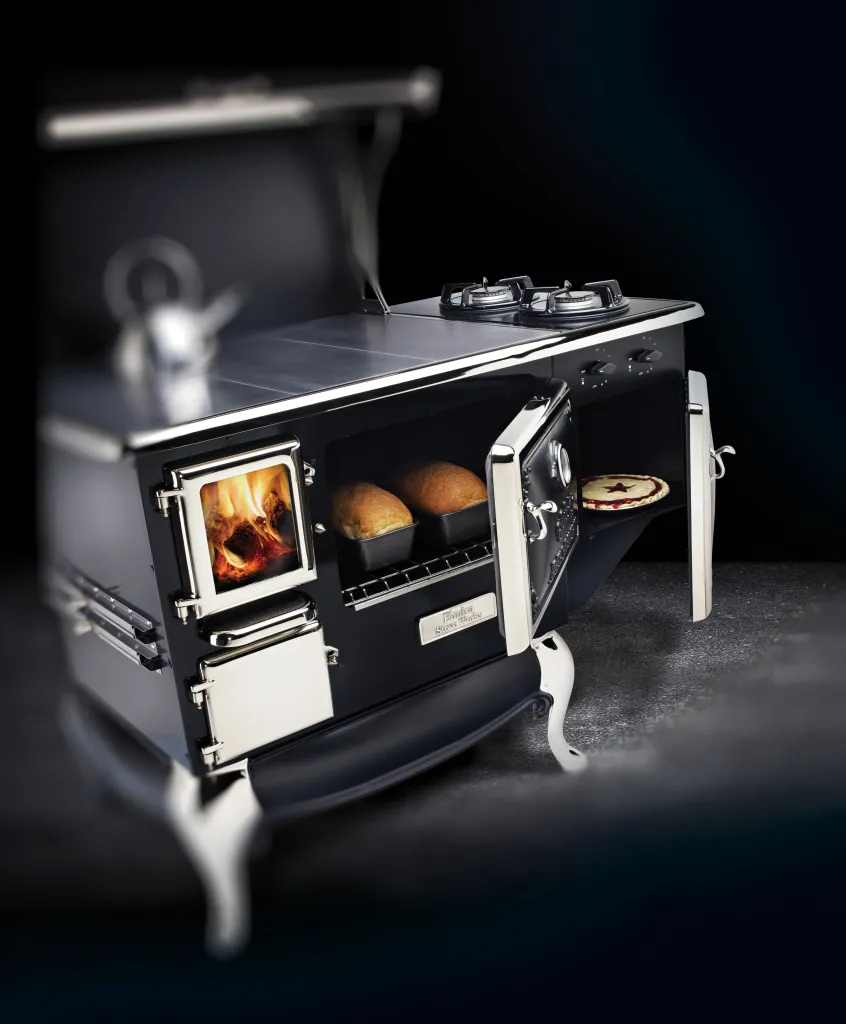
From its roots as an 18th-century innovation to a kitchen essential and creative catalyst, the woodburning cookstove boasts multinational origins, world-renowned developers, and revolutionary efficiency. And as the cookstove enters something of a renaissance, Elmira Stove Works leads the way with enhanced styling and performance of this appliance icon.
Focusing the flames
The wood burner comes from humble beginnings in the Alsace-Champagne-Ardenne-Lorraine region of northeastern France. The first woodburning cookstove patent was established in 1557 in the city of Strasbourg.
In the earliest stages, these stoves were considered luxury items, due to the expense of materials. It would take the arrival of the Industrial Revolution — some two centuries later — to make iron affordable enough for the wood cookstove to spread in availability and popularity.
The design was simple and sensible: a closed, solid cast iron or steel fire chamber atop a ceramic base with an adjustable mechanism for air control. This mechanism, the damper, allowed the user to adjust the amount of air feeding the fire, thereby controlling the heat output and fuel consumption. Fueling the fire was wood fuel — such as firewood, charcoal, chips, sheets, and sawdust — or, later, wood-derived biomass material — such as wood pellets (lending it the pseudonym ‘pellet stove’).

Advancements in America
In the 1740s, the woodburning cookstove received a series of enhancements at the hands of politician and inventor Benjamin Franklin. His design added a hollow baffle to the rear of the stove that subsequently increased heat intensity and slowed smoke circulation.
Despite the fact that he refused to officially patent it, Franklin’s version has retained many of its original features throughout the years — including the ‘Franklin stove’ designation.
As the general understanding of the chimney concept improved in the late 18th century, the addition of the slanted fireback and adjustable flue damper allowed the wood burner to be operated in smaller spaces. When Philo Stewart patented the Oberlin stove in 1834, sales boomed across the United States and Europe.

Beyond the growing pains
The development and eventual legacy of the woodburning cookstove was not without its challenges. Ironically, the surging popularity of the appliance revealed its inadequacies.
As the public looked to stoves as a main heating source during the oil crises of the 1970s, air pollution became more of a concern; as did potential fire hazards and the amount of wood required to operate the stoves. Another round of innovation and redesign eventually created a new generation of much more efficient models that featured lower levels of pollution and longer burn times.
From the past, we see the future
With a connection to vintage appliances dating back four decades, Elmira Stove Works stands as a thought leader and tireless champion of style, performance, and innovation in the industry. We began in 1975 in Elmira, Ontario with the Findlay Oval cookstove, eventually expanding into a full line of gas and electric ranges while developing relationships with retail businesses across the continent.
Since that time, Elmira has come to symbolize the finest in vintage-styled appliances to meet every home environment. Elmira has built a world-class portfolio of product offerings that boast leading-edge technologies in that signature 1800’s or 1950’s vintage-inspired styling.
And as Elmira looks ahead, the brand will continue its mission of enhancing product style and performance, while maintaining authenticity and craftsmanship.

